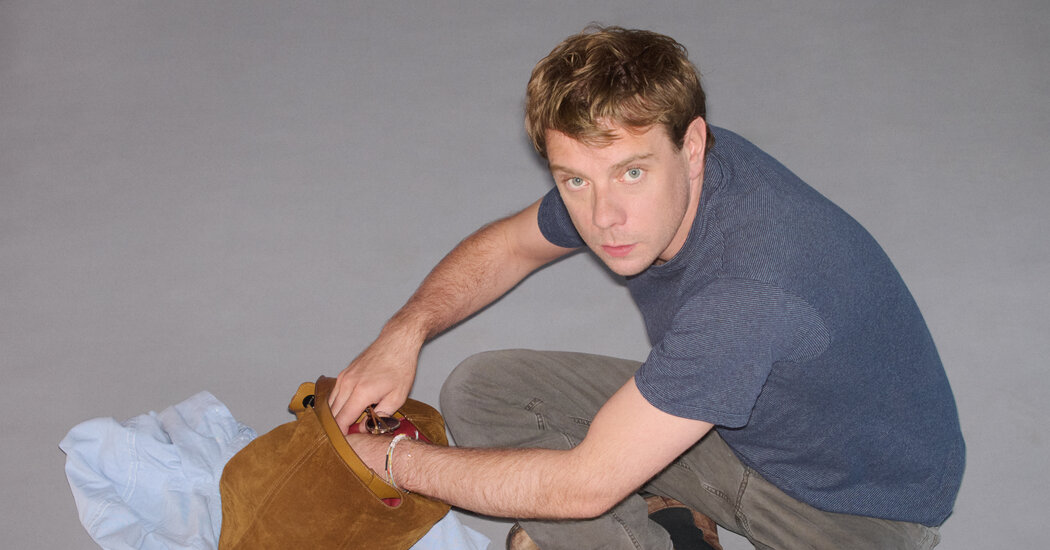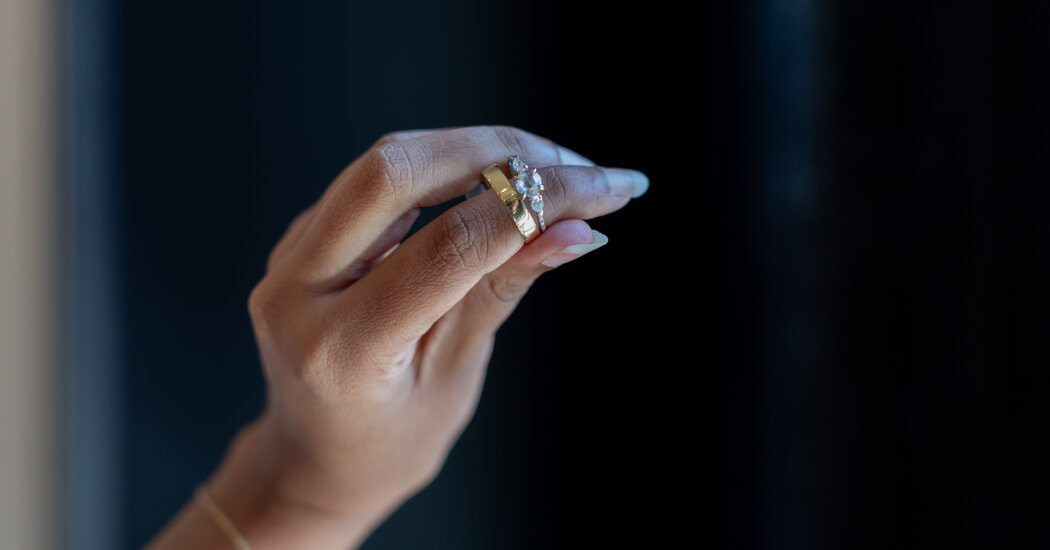David Dorward was a young boy when he first visited the Floral Clock, a combination of horology and horticulture initially installed in 1903 on a south-facing slope of the West Princes Street Garden in Edinburgh’s New Town area.
“I remember when I was a child,” he said, “my mum and dad would bring me down to the gardens because it was a sort of focal point. As a child, you’d come down to see the cuckoo coming out at 12 o’clock.”
Now 61, Mr. Dorward has been planting the clock for 42 years. And even though he officially retired two years ago as the city’s botanical services manager, the City of Edinburgh Council has continued to entice him back each spring to supervise the effort and to train new staff members in the tradition.
“I’ve had the honor of working on it,” he said, “something I’ve loved over the years.”
On a sunny but chilly day in mid-April, a welcome break from what he described as a cold, wet winter in Scotland, Mr. Dorward stopped by to examine the site. Apart from its two permanent features — the small wooden structure that houses the cuckoo, which looks a bit like a birdhouse on a six-foot pole, and the spindle that holds the hour and minute hands — there was nothing to see but bare earth.
The landmark, a popular meeting place and tourist attraction, tells time only once the hands are replaced and its electric motor is turned on, usually in July. And it is in full flower only from mid-July to mid-October. Mr. Dorward said it would be “prohibitively expensive” to replant it for winter, “and if it snowed, you’d have nothing to show for all your work.”
On May 1, Mr. Dorward and a team of three gardeners started the six-week planting process, beginning with plants such as Pyrethrum Golden Moss, a low bedding plant with daisylike flowers, to delineate the clock face. The clock’s total planting area is 192 square meters (2,065 square feet); the dial alone is 11 meters (36 feet) in diameter.
By the end of the first week, he said in a follow-up phone call, “Still a long way to go! Six hundred plants in the ground, 34,400 to go!”
Each year the clock has a different theme, chosen by the city council. This year it is to celebrate the 200th anniversary of the Royal National Lifeboat Institution, a charity that performs sea rescues around the country; last year, it marked the centenary of the Flying Scotsman, the famous steam locomotive.
And in the clock’s own centenary year of 2003, a slightly smaller reproduction — planted in London by Mr. Dorward and his team — took a gold medal at the prestigious Chelsea Flower Show.
Planning to Plant
The cost of planting and maintaining the clock is included in the city’s annual budget for parks, set at 6.1 million pounds ($7.6 million) for the fiscal year that began April 6.
But Mr. Dorward said it was difficult to determine the clock’s actual annual cost because some of the plants in it were more than 10 years old — at the end of each season the perennials and some semi-hardy annuals such as begonias are dug up and spend the winter in the council’s glass houses. “If you go into a garden center and look at an Echeveria,” he said, referring to a rosette-like succulent, “you could spend £5 on one plant and we use around 300 just around the edge.”
Even the clock’s hands are planted. In the late 1980s, the original brass hands were replaced with fiberglass pieces that Mr. Dorward said were shaped like “little troughs,” with sides to hold the soil and holes for drainage. “It’s quite a bit of weight for the mechanism,” he said. “When they’re fully planted, the minute hand weighs around 36 kilograms (80 pounds) and the hour hand weighs around 26 kilograms.”
In June 2023, Angela Rook, the associate director of the lifeboat organization, consulted with the council’s park planning staff on the 2024 design. The border plants are to spell out “RNLI 200 Years and Counting. 1824-2024.” And to the right of the dial, plants will create the organization’s red, white and blue flag with its gold crown and gold anchor symbols.
“We were actively involved in the design,” Ms. Rook said, “and we now wait to see how they make that come to life in flowers.”
To execute the design, Mr. Dorward said he planned to use more than a dozen species of plants including annuals such as the Pyrethrum, Begonia Semperflorens and several varieties of Sedum as well as perennials such as Echeveria Elegans and Glauca, both flowering succulents; and Senecio Serpens, a dwarf semi-trailing succulent.
There has been a shortage of Pyrethrum seed this year. “It’s a bit of a nightmare for the nursery,” he said, “because I need probably 7,000 plants of that just to give the outline its detail.”
But every design presents its own problems. “The Flying Scotsman was challenging last year because we needed to find gray flowers for the smoke,” he said. The team settled on Sedum spathulifolium Purpureum, a purple succulent, and Ophiopogon planiscapus Niger, commonly known as black mondo grass.
For Mr. Dorward, it also is a big challenge each year to persuade the council’s gardeners to work on the clock.
Because they are planting a slope and must keep the entire surface level (which rules out walking on unplanted areas), the gardeners have to position ladders across the space and from 12 to 35 inches above the ground. Then they lie, belly down, on the rungs and reach down to place the plants — for a total of 36 hours a week.
Passers-by often comment on the process. “Some of the staff don’t like people staring at them as they’re working,” Mr. Dorward said. “It can make them feel uncomfortable.”
There also is a physical strain, particularly on the calf muscles. “You certainly feel your legs when you go home!” he exclaimed.
And the Scottish weather doesn’t help. “It’s not the most enjoyable job, lying on a ladder if it’s pouring with rain,” he said. “If the soil’s too wet, you just make a mess.”
Floral Clock Fad
The clock’s creation was a collaboration between John McHattie, Edinburgh’s park superintendent at the time, and James Ritchie & Son, a local clock maker founded in 1809.
Historians say it was inspired by a planting that Mr. McHattie had created in the Princes Street garden to celebrate the 1902 coronation of King Edward VII. But — according to James Nye, chair of the Antiquarian Horological Society in London — a fashion for floral clocks also had been sweeping the globe since the first one was planted in Paris in 1892, followed by one in Detroit in 1893.
Despite some claims — and a lot of erroneous references online — Edinburgh’s Floral Clock is not the oldest in the world.
“It was the first in the U.K., for sure,” said Dr. Nye who also is a past master of the Worshipful Company of Clockmakers, whose headquarters are in London. “Edinburgh’s lead was pretty rapidly followed by a large number of towns around the U.K. in the next few decades, largely to create tourist attractions, and with some success.” He noted that photographs of floral clocks, especially those in seaside tourist destinations, often appeared on postcards even today.
The clock’s original works were made by the Ritchie business, which in 2013 was split into two divisions, both of which were sold. The public clock division was purchased by Smith of Derby, an English clock company, and continues to operate as a kind of subsidiary with the name James Ritchie of Edinburgh. The other division, the restoration of domestic antique clocks and watches, is called James Ritchie Clockmakers and now owned by Jon Reglinski.
Mr. Reglinski, 40, has nothing to do with the Floral Clock, but he is familiar with its history and that of the original Ritchie company.
1n 1902, he said, Ritchie was building a new tower clock for the Elie Parish Church in the Scottish city of Fife when it bought the old clock mechanism and refurbished it for the Floral Clock.
As the novelty captured public attention, he continued, Ritchie began receiving orders from around the world. Mr. Reglinski said that he did not have access to all of the records, but he that he knew the business created clocks for the Taronga Zoo in Sydney, Australia; Leu Gardens in Orlando, Fla., a gift from the local Kiwanis Club; and Harare, Zimbabwe.
Edinburgh has furthered its connection to floral clocks in other ways, too. It presented one to Kyiv, Ukraine, in 2009, the 20th anniversary of their sister-city relationship.
While the clock’s metal hands and hour numerals are visible on a slope near Kyiv’s Independence Square, a recent article in the Ukrainian digital newspaper Telegraf said its works had rusted.
On Time
The mechanism of Edinburgh’s Floral Clock has been altered or replaced several times over the decades. The cuckoo was added in 1953, and the clock was converted to electricity in 1973.
By 2017, according to Smith of Derby, the works in use at the time had reached the end of their life span and parts were no longer available, so its team upgraded the hands mechanism and cuckoo’s electronic drive.
The clock is still using that configuration, powered by a standard direct-drive motor housed in the plinth of the Allan Ramsay Monument, a statue of an 18th-century Scottish poet that stands near the clock. A 14-foot rod runs underground from the motor to a gear box under the spindle, powering the hands’ rotation.
Craig Park, a clock engineer with Smith’s James Ritchie of Edinburgh subsidiary, keeps almost all of Scotland’s public clocks, including the Floral Clock, in working order. In fact, an earsplitting chime that marked the quarter-hour disrupted a telephone interview while he was working in the turret of the Old Parish Church in Peebles.
He had visited the Floral Clock shortly before the gardeners started planting. First, he inspected the equipment in the Ramsay statue’s base and made sure that the hands would rotate.
“The gardener digs a hole over the bevel gears so I can check all the gearing,” he said. “Then I put the hands on and watch them for an hour or so to make sure there’s no problem.”
Everyone involved agreed it was important for the Floral Clock to keep good time as it has to synchronize with the One O’Clock Gun, a 105-millimeter field gun fired from Edinburgh Castle at 1 p.m. every day except Sundays, Christmas Day and Good Friday. (The tradition, started in 1861, allowed mariners in the nearby Firth of Forth to set their chronometers accurately.)
“Because if we hear the gun at 1 p.m. and the cuckoo doesn’t go off for another two minutes, that would be embarrassing,” Mr. Dorward said with a laugh.







